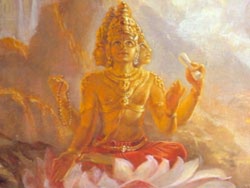Suddhāvāsā
Suddhāvāsā: The "Pure Abodes"; a name given to a group of Brahma-worlds - the five highest Rūpa worlds - consisting of
Avihā,
Atappā,
Sudassā,
Sudassī and
Akanitthā (E.g., D.iii.237).
There anāgāmī are born, and there they attain arahantship; such anāgāmī are divided into twenty four classes (See, e.g., KhA.182f.; of. PSA. 319; Vsm.710).
Bodhisattas are never born there (SNA.i.50; BuA.224).
The Suddhāvāsā are described as buddhānam khandhāvāratthānasadisā. Sometimes, for asankheyyas of kappas, when no Buddhas are born, these worlds remain empty (AA.ii.808; cf. MA.i.30).
The Buddha is mentioned as having visited the Suddhāvāsā (E.g., D.ii.50). When a Buddha is about to be born, the inhabitants of the Suddhāvāsā insert a knowledge of the signs of a Great Being in the Vedas and teach this among men in the guise of brahmins, calling such knowledge buddhamanta. Men learn it and are thus able to recognize a Great Being (MA.ii.761; SNA.ii.448). The inhabitants of the Suddhāvāsā know how many Buddhas will be born in any particular kappa by observing the number of lotuses which spring up on the site of the Bodhi-pallanka when the earth gradually emerges after the destruction of the world (DA.ii.411). It is the Suddhāvāsā Brahmās who provide the four omens which lead to a Bodhisatta's renunciation in his last lay life. See, e.g., DA.ii.455f.
